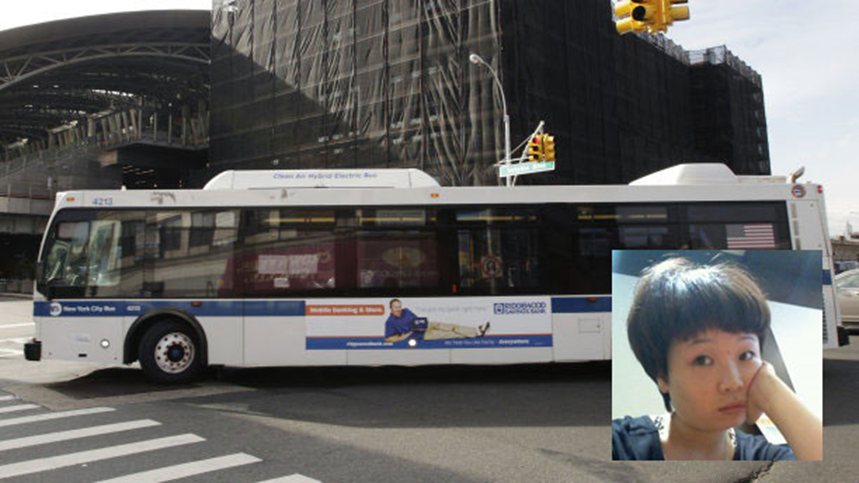On February 22, 2012, Meilan Jin was crossing an intersection at Northern Blvd. and Union St. in Queens, New York. Chatting on her cell phone as she proceeded diagonally across in an attempt to catch a van to her job at a nail salon, a city bus made a fast, wide right turn and struck her down in the road.
The bus sped off, the driver unaware that she had hit a pedestrian. Jin died of her injuries at the scene shortly afterwards.
Jin’s case is part of two related and troubling trends. First, pedestrians were one of the few groups of road users to experience an increase in fatalities in the United States in 2011, totaling 4,432 deaths and an estimated 69,000 injuries, according to a new report from the National Highway Transportation Safety Administration (NHTSA). This means that on average a pedestrian is killed every two hours and injured every eight minutes in traffic crashes.
Second, according to Transportation Secretary Anthony Foxx, the increase in “distracted walking” — walking while texting, talking on the phone, listening to music, under the influence of drugs or alcohol — has played a role in the escalation of pedestrian crashes. With eyes and ears increasingly trained to phones and other devices, pedestrians are increasingly less tuned into the world around them, creating hazardous situations while crossing streets and walking along them. Over 1,500 pedestrians were treated in emergency rooms in 2011 after being injured while using a portable electronic device, according to the Los Angeles Times, citing a recent U.S. Consumer Product Safety Commission report.
As a result, the Department of Transportation announced on Monday that it would begin a safety campaign for pedestrians that includes education and enforcement. The administration launched an informational website,Everyone is a Pedestrian. Cities with high pedestrian death rates can apply for a total of $2 million in safety grants to help combat the problem.
“We continue to see high rates of pedestrian fatalities in major cities and across every demographic,” David Strickland, the NHTSA administrator, said in a statement. “To help stop the recent increase in deaths and injuries, we need everyone to play a role in pedestrian safety. Working with partners on the federal, state, local and individual level, we hope to turn this concerning trend around.”
“Everyone in America is a pedestrian,” Foxx said. “Every pedestrian death is one too many.”
The numbers on pedestrian crashes
According to the NHTSA report, 73 percent of pedestrian fatalities occurred in urban areas, with New York, Los Angeles and Chicago as the worst cities. Seventy percent of pedestrian fatalities occurred at non-intersections and eighty percent occur during clear or cloudy weather conditions, as opposed to in the rain or snow. Additionally, more than 70 percent of pedestrian deaths occurred at night.
Alcohol played a big role in pedestrian crashes, according to the data. In almost half of the crashes, either the driver or the pedestrian had a blood alcohol concentration (BAC) of 0.08 or higher. In these cases, it was much more often that the pedestrian was drunk (35 percent of the time) than the driver (13 percent).
Pedestrians aged 65 and up accounted for 19 percent of all pedestrian fatalities and an estimated 10 percent of all pedestrians injured in 2011 . Additionally, over one-fifth of all children between the ages of 10 and 15 who were killed in traffic crashes were pedestrians.
Staying safe while you walk
The Department of Transportation and NHTSA provided tips on the new Everyone is a Pedestrian website on how to be both a safe pedestrian and driver.
For pedestrians:
– Walk on a sidewalk or path whenever they are available
– Be cautious night and day when sharing the road with vehicles. Never assume a driver sees you (he or she could be distracted, under the influence of alcohol and/or drugs, or just not seeing you). Try to make eye contact with drivers as they approach you to make sure you are seen.
– Be predictable as a pedestrian. Cross streets at crosswalks or intersections whenever possible. This is where drivers expect pedestrians.
– Avoid alcohol and drugs when walking; they impair your abilities and judgment too.
For drivers:
– Look out for pedestrians everywhere, at all times. Very often pedestrians are not walking where they should be.
– Be especially vigilant for pedestrians in hard-to-see conditions, such as nighttime or in bad weather.
– Never pass vehicles stopped at a crosswalk. They are stopped to allow pedestrians to cross the street.



